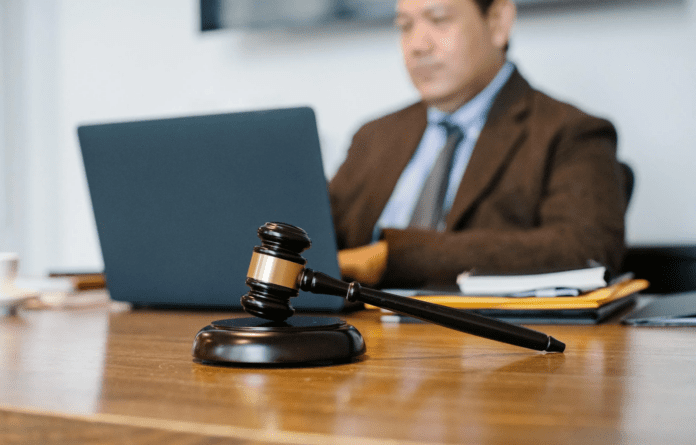At this stage, none of us are surprised by technology’s power to transform entire industries. AI, in particular, has driven notable changes in fields from entertainment to healthcare. More recently, it’s started to make its mark in the legal sphere.
Legal professionals are slowly starting to bring their AI usage into courtroom settings for everything from citation presentation to informed judgment guidance. Naturally, this shift has raised ethical concerns about everything from the efficiency of courtroom AI, to what role we should ultimately give this technology. However, experts are also excited to embrace a potentially new age of more efficient courtroom processes overall.
In this article, we’ll consider the roles AI could potentially provide for courtrooms moving forward, as well as the steps required to ease pre-existing concerns.
Exploring the Existing Role of AI in Legal Settings
AI’s presence in the courtroom is hitting headlines right now, but this technology has been in legal settings for almost as long as it has existed. Recent years have particularly seen more lawyers switching towards AI software to simplify processes like research and trial preparation.
The potential of this switch speaks for itself and includes –
- Unbiased data collection: AI software addresses the risk of human data bias by ensuring comprehensive data collection that considers all sides of a legal case.
- Reduction in Human Errors: AI, which can efficiently handle backend legal tasks with a 98-99% accuracy rate, can significantly reduce the risk of human errors like document loss.
- Increasing Efficiency: AI software is positioned to handle repetitive tasks like basic legal research so that legal teams can prioritize building a better case.
Lawyers and clients alike can’t deny the benefits that these opportunities bring behind the scenes. It therefore seems inevitable that AI would start making its way into the courtroom. But, what form is this crossover set to take?
Understanding the Potential of AI in the Courtroom
So-called ‘smart courts’ that use AI and automation are now commonplace in countries like China and fundamentally serve to improve efficiency, accessibility, and fairness in the legal system. Since as far back as 2017, China has made particular use of ‘internet courts’ which utilize non-human AI judges to register and resolve low-level cases.
This is an extreme example of what courtroom AI can do, but it’s a useful starting point for considering AI’s court-based potential. In the US, we’ve started to explore that potential in our own ways, which include –
- Producing Low-level Pleadings: Lawyers are increasingly using AI software like ChatGPT to produce their pleadings in low-level cases like tenant disputes and workers’ compensation filings.
- Flagging discrepancies: AI software provides judges with immediate access to court documents, as well as quickly cross-referencing and fact-checking that information. AI software can also flag discrepancies or incomplete citations for faster, more accurate judgments.
- Guiding informed rulings: AI software has informed more than 50,000 convictions in areas like the State of Virginia by calculating factors like a defendant’s risk of re-offending. AI software considers these factors before recommending suitable judgments.
What are the Benefits of Legal AI?
Legal AI is still very much in its infancy, but even the early courtroom iterations discussed have already resulted in notable benefits, particularly in countries like China.
Top legal AI benefits worth noting include –
- Cost cutting: As well as handling repetitive legal processes, legal AI can significantly speed up processes like court judgments. This allows lawyers to reduce legal costs for each case, which both frees resources and…
- Increasing accessibility: Top-quality lawyers who can cut costs using AI are able to offer their services at a much lower rate. This enables accessibility to quality legal representation for clients from all walks of life and financial backgrounds.
- Opening the legal field: AI is also bringing benefits for clients who can’t afford even reduced lawyer rates, or who prefer to represent themselves. This is because AI software can ensure professional, well-prepared defenses, even for people without legal training.
The Risks of Courtroom AI
These benefits are so tempting that you might be wondering why there’s such a backlash against AI in our courtrooms. Shouldn’t we encourage a technology that stands to enhance legal accessibility?
To some extent, yes, but courtroom AI isn’t entirely without its risks, which are evident when we consider high-profile past cases like Mata vs. Avianca. In this case, a lawyer’s use of ChatGPT resulted in the use of fake quotes and citations. This, and cases like it, have made lawyers and the public generally wary of AI court usage which could result in –
- Fabricated claims: As with Mata vs. Avianca, there is a risk of fabrication, or mistakes, when using AI. This is because AI software doesn’t necessarily know to pick only citations from high-quality, trusted, sources in the same way a lawyer would.
- Struggling to navigate US laws: US state and federal laws are incredibly complex and varied, meaning that it’s almost impossible for standardized AI solutions to navigate courtroom intricacies like varying processes or punishments.
- Potentially doubling down on Bias: In some respects, AI collection of things like evidence or case data can limit the risk of human bias. However, there is also a strong argument that AI usage could double down on certain biases due to generalizations and an overall lack of case context.
- Removing human elements: Removing human elements from the legal process could potentially have far-reaching consequences, which could include increased isolation for defendants, and a failure to consider things like the grey areas of a case. This may result in more convictions, and more emotional distress for clients overall.
- Leaving legal files at risk: Wide-scale data breaches across software like ChatGPT are also worrying for legal experts who build their cases this way. Lawyers particularly need to be careful of remaining compliant when inserting sensitive information into AI software that doesn’t have contractual protective agreements, or defendant permissions.
AI in Court: A Difficult Balancing Act
All of the factors we’ve discussed so far mean that legal professionals are in increasingly difficult positions when it comes to courtroom AI. On the one hand, benefits like increased accessibility feel long overdue. However, it’s impossible to overlook risks like the removal of human processes and judgment.
Balancing these realities will require an increasingly delicate approach as AI inevitably encroaches on courtrooms more and more. This should include –
- Ongoing fact-checking: AI itself might simplify fact-checking in the courtroom, but it’s vital that facts are also verified by legal teams long before they reach that stage. This ensures court documents that always come from credible sources, include real citations and quotes, and are fully applicable to the case in question.
- Retaining human roles: AI usage is one thing, but the retention of human roles remains key. This is true from early on in the legal process, where companies like Alana’s Bail Bonds should continue to provide the crucial financial support and advice that defendants need to start their cases on the right footing. Later on in the process, lawyers should continue to prioritize face-to-face client meetings that also double up as well being check ins.
- Understanding AI’s Limitations: It’s also vital to understand and work around pressing AI limitations, such as an inability to understand grey areas in complex cases that will continue to require a more nuanced, human-driven approach.
Courtroom AI looks as though it’s here to stay. This change stands to benefit everybody navigating the legal system in the coming years, as long as they also take the time to understand any AI risk factors, and the best options for working around them.






